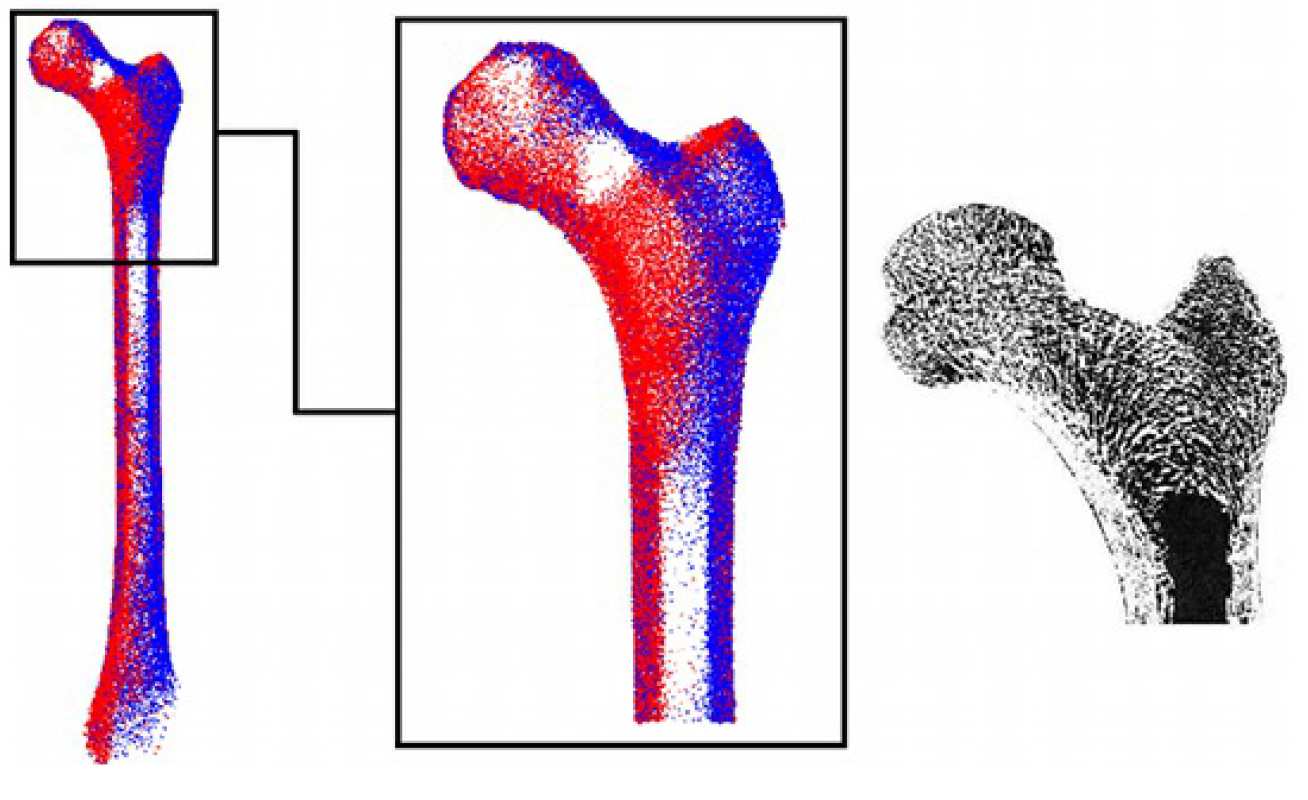Orthotropic finite element modelling of the skeletal system
Introduction
Prediction of trabecular architectural arrangement and bone property distribution is fundamental in order to understand the underlying mechanics of bone fractures. An iterative strain-adaptive bone remodelling algorithm which predicts orthotropic elastic property distribution was developed. Bone was modelled as a continuum matrix with local orthotropic material properties.
Local material orientations were updated in order to match the principal stress directions and local properties modified according to the associated normal strains. Preliminary results show that this algorithm can predict known trabecular features and architecture.

Currently, more physiologically accurate bone models are being produced, with inclusion of multiple load cases and free boundary conditions. Validation of the resultant heterogeneous orthotropic models is also underway, essential in the development of an invaluable tool in assessing directionality of bone structure and its corresponding orthotropic material property distribution. The project can have a direct application in the development of protection devices for vehicle collisions amongst other applications.
Recently, finite element models that simulate bone response to its mechanical environment have been developed. These allow prediction of bone remodelling or morphogenesis to altered load conditions, such as during the fracture healing process and in bone-implant interactions. In order to simplify the analysis and reduce computational times, bone is usually considered to have isotropic properties. This isotropic material assumption does not explain the directionality observed in bone’s internal trabecular structures, as well as the orthotropic properties that have been verified in other studies. Orthotropy has been shown to be a close approximation to bone’s anisotropy
Prediction of stiffness distribution and directionality in bone structures can be a very important tool in understanding the mechanics underlying fracture initiation and propagation.
Publications
Further details of the work are given in:
- Geraldes, D.M., Modenese, L., Phillips, A.T.M., Consideration of multiple load cases is critical in modelling orthotropic bone adaptation in the femur, Biomechanics and Modeling in Mechanobiology, 2015
- Geraldes, DM, Phillips, ATM, A comparative study of orthotropic and isotropic bone adaptation in the femur, International Journal for Numerical Methods in Biomedical Engineering, 2014, Vol:30, Pages:873-889
Researchers
Dr Andrew Phillips
Dr Diogo Geraldes


